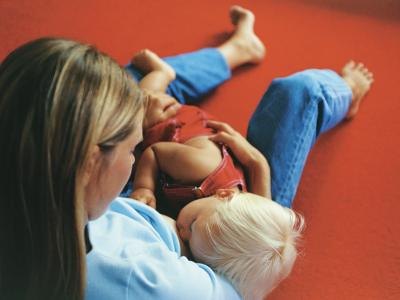
If you wean your baby and then regret the decision, you may decide to attempt to relactate. Relactation can be a challenging process and success is not guaranteed, but with tenacity and effort, you may be able to begin breastfeeding a baby again. Reestablish the breast milk supply after weaning with a careful process that stimulates the breasts to begin producing milk again.
Instructions
- 1
Consult with a certified lactation consultant and your pediatrician before you attempt to relactate. The lactation consultant can coach you and give you support as you attempt to reestablish your milk supply. The pediatrician can monitor the baby's health and growth to ensure that the baby continues to get enough food.
2Take Fenugreek capsules to try to increase your milk supply. Fenugreek is a herb that is common in Asian and European cuisine. The American Academy of Pediatrics (AAP) suggests Fenugreek as an herbal medicine that may help enhance milk supply; however, the AAP notes that no scientific data supports Fenugreek's effectiveness. Ask your lactation consultant about dosages -- a minimum of 500 mg three times each day is a common dosage, according to Pregnancy.org. You may notice results from Fenugreek within one to two weeks.
3Begin placing the baby on both breasts to breastfeed every two to three hours, for a total of eight to 10 times each 24-hour period. Try to get the baby to suck for 15 to 20 minutes at each breast.
4Use the breast pump to provide the same amount of breast stimulation if the baby will not breastfeed.
5Place formula into the supplemental nursing container and attach the flexible tube to the nipple of the breast (follow manufacturer instructions). The tube will allow milk to flow to feed the baby even if your breast milk has not come back in yet. This can be an effective way to help a baby relearn the breastfeeding process and stimulate your breasts to produce milk at the same time.
6Watch the baby for indications that he is getting enough to eat. Urination and stool patterns should not change or decrease as you attempt to relactate.
7Gradually decrease the number of ounces the baby receives from supplemental formula as your milk supply increases. Make sure the baby gets enough nourishment, but gradually give less formula when you can see that the baby gets enough to eat after breastfeeding. A satisfied baby will be content; a baby that is still hungry will cry and root for food.





















